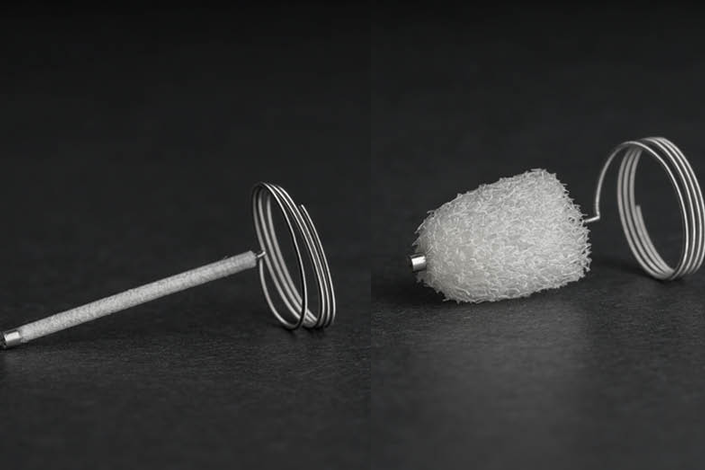Novel polymer foam device receives FDA clearance for cardiovascular treatments

Image: Dr. Duncan Maitland
A lifesaving device more than 20 years in the making has received 510(k) clearance from the U.S. Food and Drug Administration (FDA). The clearance allows a company, co-founded by Associate Department Head Dr. Duncan Maitland from the Department of Biomedical Engineering at Texas A&M University, to begin to market the medical device.
Maitland developed the IMPEDE Embolization Plug, a device that could provide doctors with a more effective and less risky method for treating aneurysms – blood-filled, balloon-like bulges in the walls of a blood vessel that can rupture and cause vascular damage that is debilitating or even fatal. The device quickly clots blood to block it from reaching aneurysms, tumors or other issues. It creates a different kind of clot than current devices.
“If you put in other devices, they’re asking for big clots to form,” Maitland said. “Instead of creating a blood clot that is three or four millimeters in diameter, we’re creating thousands of smaller clots that are connected together.”
How it works
The device is made from polyurethane-based shape memory polymer (SMP) foams. While small during insertion, the porous polymeric materials are capable of growing to a “memorized” larger conformable shape when delivered into a blood vessel, allowing it to obstruct or reduce the rate of blood flow in the vein or artery targeted by the doctor.
After blocking flow in a vascular target, there is also concern that one could reform over time. With the IMPEDE Embolization Plug, test results have shown that SMP foams promote long-term health of the areas of the blood vessel, reducing the chances that another treatment is required.
“The benefit to patients is that they don’t get reoccurrence,” Maitland said. “This is a less traumatic deliverable device. As it’s being delivered, it’s not potentially rupturing the blood vessels like some of the current devices would, and it heals the site so they don’t have to have it retreated.
Read more at the College of Engineering.

